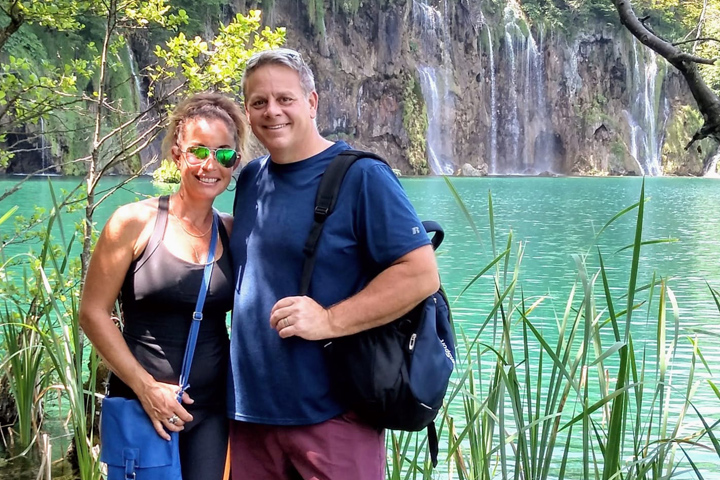Thriving Beyond Treatment: Long-Term Survival Strategies After Intense Radiation Therapy

In a remarkable journey of resilience and hope, Steven Yedwabnick, a long-term survivor of pancreatic cancer, shares his gripping story of diagnosis and treatment. Residing in Sioux Falls, South Dakota, since 2005, Steven’s health challenges began in 2006, leading to a life-altering discovery. His experience highlights the importance of early detection and the power of advocacy in the fight against pancreatic cancer.
A Troubling Start: Symptoms and Diagnosis
In the spring of 2006, Steven began experiencing severe heartburn and indigestion, which he initially managed with Zantac. However, when these symptoms persisted, he sought medical advice. By September, routine blood tests revealed elevated liver enzymes, prompting further investigation.
- Notable symptoms included:
- Increased heartburn and indigestion
- Mental fatigue and occasional forgetfulness
- Significant weight loss and jaundice
After a troubling weekend of worsening symptoms, including a bile duct blockage, Steven underwent a CT scan and was admitted to the hospital. A stent was placed in his obstructed bile duct, revealing further complications.
The Diagnosis: A Tumor is Found
Under the care of Dr. Dany Shamoun, further tests were conducted, including ten biopsies, which confirmed the presence of a tumor in the pancreas. A visit to the Mayo Clinic in Rochester, Minnesota, resulted in a definitive diagnosis of pancreatic cancer. The CA 19-9 test indicated autoimmune pancreatitis, but subsequent needle biopsies confirmed the tumor’s malignancy.
- Key points from the diagnosis:
- Tumor located at the head of the pancreas
- Prognosis without surgery: approximately five months to live
- Surgery recommended: Whipple procedure with a 20% chance of five-year survival
Surgery was scheduled for December 11, 2006, just a day after Steven’s birthday. The operation successfully removed a 2 cm tumor, and he was classified as stage IIb due to potential cancerous material leakage during the biopsy.
Treatment Journey: Chemotherapy and Radiation
Following surgery, Steven generously donated his removed tissue for research at the University of Minnesota. His treatment protocol involved a combination of chemotherapy and radiation. He began with Gemzar, experiencing minimal side effects, and later faced a grueling seven-week regimen that included 35 radiation treatments along with continuous chemotherapy.
- Treatment timeline:
- Two rounds of Gemzar chemotherapy
- A challenging seven-week radiation and chemotherapy protocol
- Notable side effects included mouth sores and significant weight loss
Despite the grueling nature of the treatment, Steven remained determined, walking to the hospital for daily sessions.
The Power of Advocacy and Survival
Steven’s treatment concluded on July 5, 2007, and he began taking Creon to aid his digestion due to pancreatic damage from radiation. By December 11, 2018, he celebrated 12 years as a pancreatic cancer survivor, with no signs of recurrence and a stable quality of life.
- Key achievements in survivorship:
- A1C levels stabilized at 6.2
- Advocacy efforts for pancreatic cancer research
- Over 800 presentations to raise awareness
As the State of South Dakota Advocacy Chair for the Pancreatic Cancer Action Network (PanCAN), Steven has passionately advocated for research funding, engaging with local leaders and raising awareness about the disease.
Steven Yedwabnick’s story is a testament to the strength of the human spirit and the critical importance of advocacy in the fight against pancreatic cancer. His journey from diagnosis to survivorship continues to inspire many, proving that hope and resilience can lead to extraordinary outcomes.






